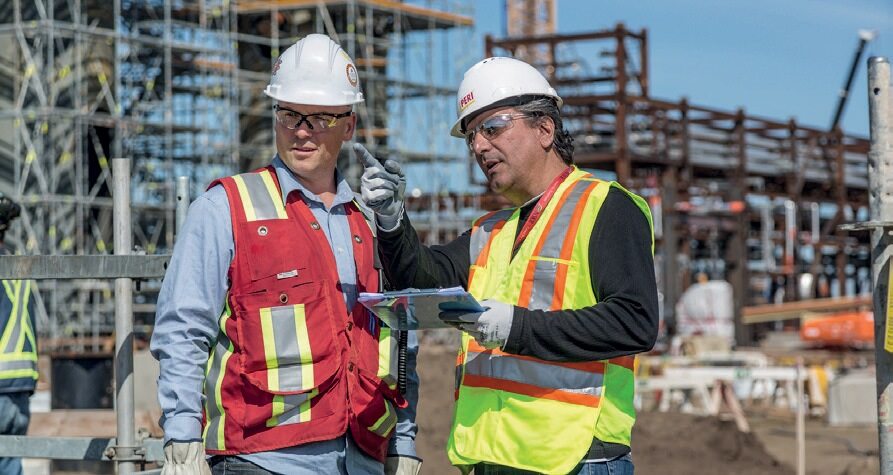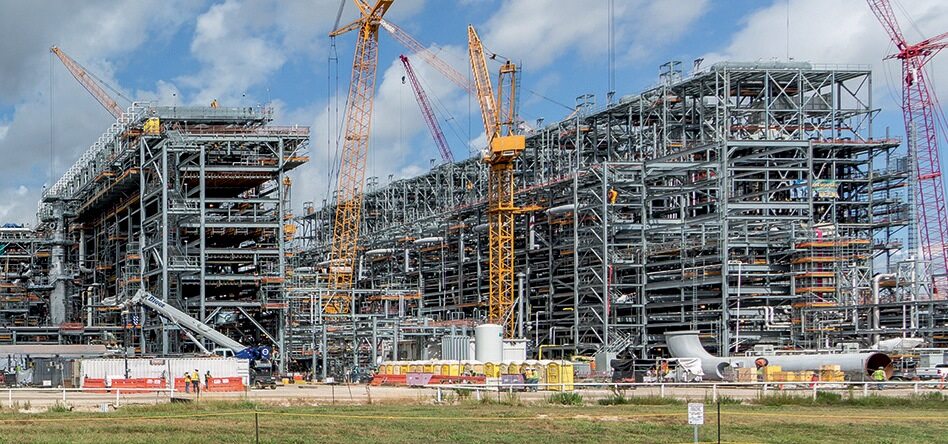Renting vs. Owning: The Scaffolding Dilemma
Top Considerations for Construction Professionals
When undertaking a new construction project, the mathematics involved are usually very complex. A large list of considerations is at play for architects, contractors, and installers to meet the requirements and demands of the project from beginning to end. The selection of material plays a big role in the success of the project, both in the short term and long term. Ensuring that the project can be completed on time, safely, and efficiently is also critical to a building’s overall performance.
Whether it is a large commercial project or an industrial project, scaffolding is a key piece of equipment on any construction site. That scaffolding becomes the critical infrastructure necessary for crews to gain safe access to the site, change levels, and do all the work necessary to take a building from drawings to completion. Because of this, contractors must weigh the pros and cons of renting versus owning scaffolding on an individual basis. Among key considerations: How easy will the material be to install? How long will it take? Does the construction crew have the material and tools needed to install the scaffolding safely and efficiently? Does the team have the resources to assemble and disassemble the scaffolding?
In North America, some construction stakeholders have begun to see value in owning scaffolding rather than renting it. The choice for each construction team rests on a variety of considerations – from an anticipated pipeline of work and financial considerations to capital investments and the locality of the work.
What’s on the Horizon?
For contractors, the decision to rent or own material on a construction site can be heavily impacted by the amount of workload in the pipeline.

For projects with a shorter timeline, renting material might be the simpler option. On average, a project will have scaffolding material on site for four to five months. However, for contractors committing to a long pipeline of work, buying might be more efficient. For instance, for projects that are running on 9-10-month schedule, purchasing scaffolding upfront would be a top consideration.
Purchasing material is also not restricted to a single project. If contractors can forecast a long pipeline of work that will stretch beyond a year, they likely need to ask themselves some important questions to make the right decision:
- Why persist renting the material?
- Is it more cost conscious to purchase it given the length of time that the equipment is needed?
- Can equipment ownership translate into cost savings when the scaffolding serves multiple projects over several months?
- Are there resources in place to store the scaffolding if necessary, so that it can be activated when it is needed?
With a long pipeline of work on the horizon, purchasing material can cut down on costs for several years. While the up-front costs may be higher, they ultimately translate into a lower total cost when that cost it is amortized over time. Ownership of scaffolding can also fast track the construction timeline depending on the size and scale of the project. With scaffolding already secure and in the company’s possession, project managers can potentially accelerate the work on a job site by putting scaffolding in place in short order versus waiting for rented equipment to be sourced and delivered.
Dollars and Sense
When deciding to rent or purchase scaffolding systems, cost is a key driver in the decision-making process. Renting material may be a cost-effective solution for short-term projects where material is only needed on site for a short time span. For instance, renting is the best option for scaffolding equipment that is only needed on site for one month. Many companies do not possess the cash flow to justify purchasing material up front. If cash flow is restricted, then renting material might make more sense.
Those companies that purchase scaffolding can realize a discernible return on investment (ROI) based on the lifespan and durability of the material. The key questions to pose:
- Why keep renting if the money to purchase the scaffolding is available?
- How long will the material last if it is purchased? What is the return on investment?
- What material is most appropriate to purchase such that it provides long-term flexibility and agility in a changing construction environment?
Access to Material Assets
With construction rates skyrocketing, scaffolding suppliers only have a limited supply of material in the yards for renting out or selling material. For equipment companies, juggling how much material to keep on their property for profitability is key for utilization.

When material shortages come into play, ownership of scaffolding becomes a game changer. Contractors and builders who choose to rent scaffolding for each job are placing themselves at risk, because the material they need to kickstart a job may not be available at the time. If that same scaffolding is in high demand, it can also impact rental prices, which can ultimately drive up the total cost of a project.
This is where the total cost of ownership comes into play. In a market decline, companies that own their scaffolding do not have to factor the cost of its usage into a job after about five years of ownership. The asset is fully paid off, and it still represents value because it can be reused. Builders and contractors who find themselves in a competitive bidding situation can often gain the advantage if they do not have to factor rental costs into their bid.
Purchasing scaffolding also represents an investment in a long-term asset that can pay dividends over time. For instance, if a builder invests in $5 million dollars of material, that scaffolding can become an asset for an equipment holding company that rents the equipment to other companies seeking scaffolding. The company recovers its up-front costs over time and can even create a scenario where it can split revenues on a job depending upon the configuration of contractors and subcontractors.
Careful Analysis for Long-Term Gain
Every construction project possesses its unique characteristics and complexities. When it comes time to secure scaffolding for that project, the decision to rent or own scaffolding requires careful examination and consideration.
Ultimately, construction companies need to decide whether they see scaffolding as a built-in cost on a job or whether it can be transformed into a long-term asset that provides the company with agility and flexibility.
With the help of companies such as PERI USA, contractors around the United States can gain an advantage by purchasing materials to control the quality and safety of their work, save costs, and allow for greater flexibility for upcoming project timelines. That, in turn, can represent a competitive edge in the marketplace.
source https://csengineermag.com/renting-vs-owning-the-scaffolding-dilemma/
تعليقات
إرسال تعليق